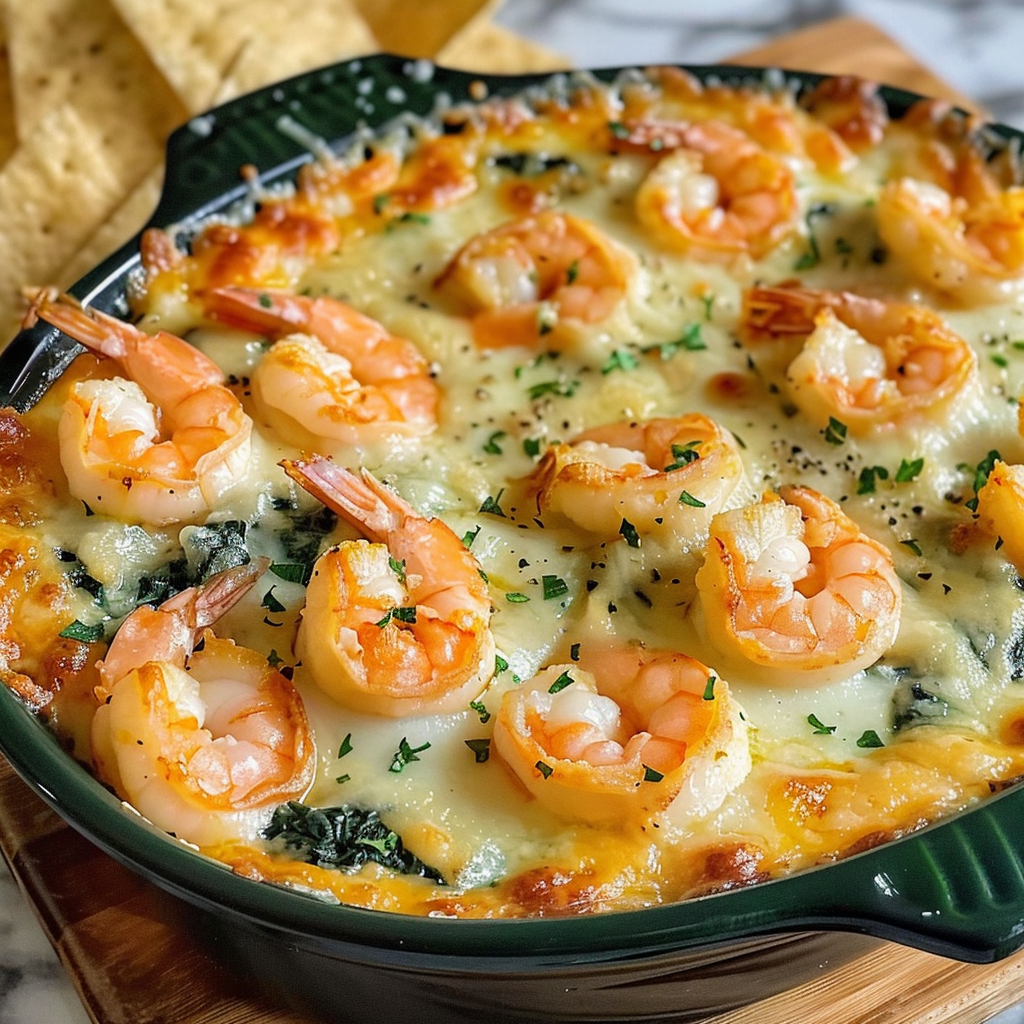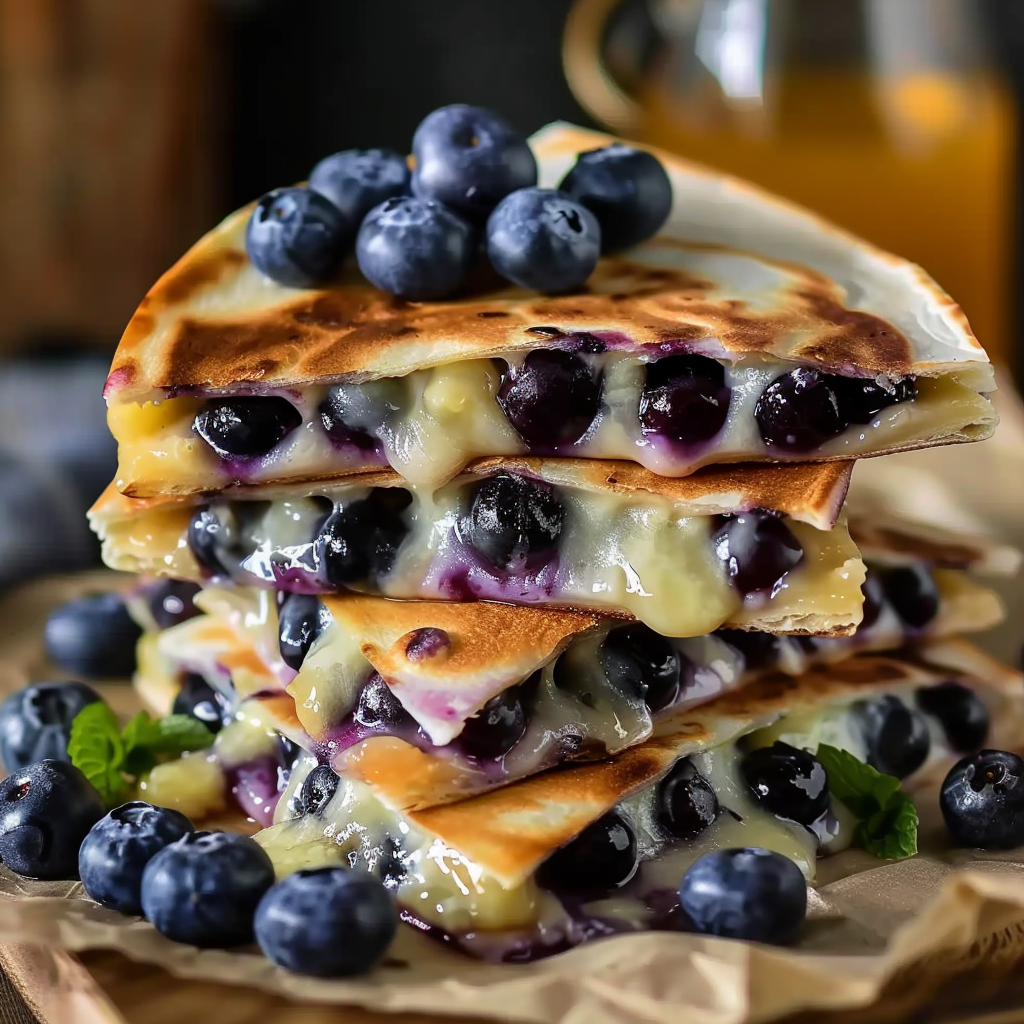French Onion Stuffed Chicken is a delightful culinary creation that merges the comforting flavors of the classic French onion soup with the heartiness of stuffed chicken breast. This recipe takes inspiration from the rich, caramelized onions and melted cheese that define the beloved soup, infusing these elements into a succulent chicken dish that’s both satisfying and elegant.
French onion soup has long been a favorite for its deep, savory flavors and its ability to warm the soul on a cold day. The combination of sweet, caramelized onions, savory beef broth, and gooey melted cheese is nothing short of comforting. In this recipe, those same flavors are reimagined in a way that transforms a simple chicken breast into a gourmet meal, perfect for both weeknight dinners and special occasions.
The marriage of flavors in French Onion Stuffed Chicken elevates home cooking to a new level. The sweetness of the onions, the umami of the beef broth, and the richness of the melted Gruyere or mozzarella cheese all come together in a dish that feels both familiar and luxurious. Whether you’re a fan of French onion soup or just looking for a new way to enjoy chicken, this recipe offers a delicious and sophisticated twist on a classic favorite.
Ingredients Overview
Creating the perfect French Onion Stuffed Chicken starts with selecting the right ingredients. This dish relies on a combination of flavors and textures that, when brought together, create a meal that’s both hearty and sophisticated. Below is a detailed list of the ingredients used in the recipe, along with a discussion on the significance of each key component and the optional ingredients that can enhance the flavor profile.
Detailed List of Ingredients:
- 2 tablespoons unsalted butter
- 4 large onions, halved and thinly sliced
- Pinch of salt and pepper, to season
- 2 teaspoons fresh chopped thyme, divided
- 2 tablespoons white wine, sherry, or balsamic vinegar (OPTIONAL)
- 2 cloves garlic, minced
- 1/2 cup beef broth or stock, divided
- 1 tablespoon olive oil
- 4 boneless, skinless chicken breasts
- 2 teaspoons garlic powder
- 1 teaspoon ground thyme
- 1 cup shredded Gruyere cheese (or mozzarella cheese)
- 4 tablespoons freshly grated Parmesan cheese
Significance of Key Ingredients:
- Unsalted Butter
Butter is used to sauté and caramelize the onions, providing a rich base flavor that enhances the sweetness of the onions as they cook. The unsalted variety allows you to control the salt level in the dish more precisely. - Onions
The star of the dish, onions are slowly caramelized until they are golden brown and jammy. This process deepens their flavor, bringing out natural sweetness that contrasts beautifully with the savory elements of the dish. Yellow onions are typically used, but sweet onions can add an extra layer of sweetness. - Thyme (Fresh and Ground)
Thyme adds an earthy, aromatic flavor that complements the richness of the caramelized onions and the savory chicken. Fresh thyme is used to finish the dish, while ground thyme is mixed into the chicken seasoning for a consistent flavor throughout. - Beef Broth or Stock
Beef broth is used to deglaze the pan and add depth to the onions, making the dish taste more robust. It also provides moisture to the onions during baking, ensuring they remain tender and flavorful. This is a key ingredient that echoes the traditional beefy notes of French onion soup. - Chicken Breasts
Boneless, skinless chicken breasts serve as the perfect vessel for the flavorful filling. Their mild taste allows the flavors of the onions and cheese to shine, while their lean nature keeps the dish lighter. - Gruyere Cheese (or Mozzarella Cheese)
Gruyere is a traditional choice for French onion soup due to its creamy texture and nutty flavor, which melts beautifully over the chicken. If Gruyere is unavailable, mozzarella can be used as a milder, more accessible alternative. This cheese contributes a luxurious richness to the dish. - Parmesan Cheese
Parmesan adds a sharp, salty flavor that contrasts nicely with the sweetness of the onions and the creaminess of the Gruyere. It also helps to create a deliciously crisp crust on top of the chicken. - Garlic
Minced garlic is added to the caramelized onions, infusing them with a warm, aromatic flavor that enhances the overall savory profile of the dish.
Optional Ingredients and Their Impact on Flavor:
- White Wine, Sherry, or Balsamic Vinegar
Adding white wine, sherry, or balsamic vinegar to deglaze the pan is optional, but it can significantly enhance the depth of flavor. These liquids help to lift the fond (the browned bits) from the bottom of the pan, incorporating it into the onions for extra richness. White wine adds a slight acidity and fruitiness, sherry brings a nutty, complex flavor, and balsamic vinegar adds a touch of sweetness and tang. - Olive Oil
Olive oil is used for searing the chicken breasts. Its high smoke point and subtle flavor make it ideal for this purpose, helping to create a golden-brown crust that locks in the juices and flavor of the chicken. - Garlic Powder
Garlic powder is mixed with ground thyme and other seasonings to flavor the chicken breasts. It provides a consistent garlic flavor throughout the dish, complementing the fresh garlic used in the onions.
Each of these ingredients plays a crucial role in building the layers of flavor that make French Onion Stuffed Chicken so delicious. The combination of caramelized onions, melted cheese, and well-seasoned chicken results in a dish that’s not only flavorful but also rich in texture and aroma. Optional ingredients like wine or vinegar can be used to further customize the dish to your taste, adding complexity and depth to the already harmonious flavors.
Ingredient Selection Tips
Choosing the right ingredients is key to ensuring that your French Onion Stuffed Chicken turns out flavorful and well-balanced. Here are some tips to help you make the best choices, from selecting the perfect onions to finding the right cheese, chicken, and possible substitutions.
Choosing the Best Onions for Caramelization
- Yellow Onions vs. Sweet Onions
- Yellow Onions: Yellow onions are the most commonly used for caramelization because they have a balance of sweetness and acidity that develops into a deep, complex flavor as they cook. They are slightly pungent when raw but mellow out beautifully during the caramelization process, making them ideal for this recipe.
- Sweet Onions: Sweet onions, such as Vidalia or Walla Walla, have a higher sugar content, which means they caramelize faster and develop a sweeter flavor. While this can add an extra layer of sweetness to the dish, it can sometimes be overpowering, so use them if you prefer a sweeter profile in your dish.
- Recommendation: For a balanced flavor that complements the savory elements of the dish, yellow onions are typically the best choice. However, if you prefer a sweeter taste, sweet onions are a good alternative.
Selecting the Right Cheese
- Gruyere Cheese vs. Mozzarella Cheese
- Gruyere Cheese: Gruyere is a traditional cheese used in French onion soup and is ideal for this dish due to its rich, nutty flavor and excellent melting qualities. It adds a slightly earthy undertone that pairs perfectly with the caramelized onions and savory chicken.
- Mozzarella Cheese: Mozzarella, while milder in flavor, is another good option. It melts into a creamy texture, making it a suitable substitute if Gruyere is unavailable or if you prefer a more subtle cheese flavor. However, it lacks the distinctive nuttiness of Gruyere.
- Recommendation: Gruyere is the preferred choice for its flavor and authenticity, but mozzarella can be used for a milder taste or if it’s more readily available.
- The Role of Parmesan Cheese
- Parmesan cheese is used as a finishing touch to add sharpness and a salty bite. Its granularity allows it to create a slight crust on top of the chicken, adding texture and an additional layer of flavor. While Gruyere or mozzarella provide creaminess, Parmesan balances the dish with its robust, savory notes.
Tips on Picking Quality Chicken Breasts
- Boneless, Skinless Chicken Breasts
- Why Boneless and Skinless? Boneless, skinless chicken breasts are recommended for this recipe because they cook evenly, absorb flavors well, and are easy to stuff. The lack of bones and skin allows the chicken to be easily sliced open to create pockets for stuffing, and they cook more quickly than bone-in, skin-on cuts.
- Selecting Quality Chicken: Look for chicken breasts that are uniform in size for even cooking. The meat should be pale pink and firm to the touch, without any strong odor, which indicates freshness. Organic or free-range chicken can offer better texture and flavor, as these birds are often raised without antibiotics or hormones.
- Substitutions:
- Thighs Instead of Breasts: If you prefer dark meat, boneless, skinless chicken thighs can be used instead of breasts. Thighs are juicier and more forgiving in cooking, but they may require slightly longer cooking times.
- Vegetarian Option: For a vegetarian twist, consider using large portobello mushrooms or thick slices of tofu as a substitute for the chicken. These can be stuffed in a similar manner, though the cooking times will vary.
Substitutions for Certain Ingredients
- Cheese Substitutes:
- Swiss Cheese: If Gruyere is unavailable, Swiss cheese is a close alternative, offering a similar flavor profile but with slightly less depth.
- Cheddar Cheese: For a sharper, more robust flavor, you can substitute cheddar cheese, though it will change the overall taste of the dish.
- Broth Substitutes:
- Vegetable Broth: If you’re looking to make the dish vegetarian (using tofu or mushrooms), vegetable broth can replace beef broth. It will offer a different flavor, but still contribute to the dish’s depth.
- Chicken Broth: For a lighter flavor, chicken broth can be used in place of beef broth, which will result in a less intense but still savory dish.
- Herb Substitutes:
- Dried Thyme: If fresh thyme isn’t available, dried thyme can be used. However, since dried herbs are more concentrated, use about one-third of the amount called for fresh thyme.
- Rosemary or Oregano: For a different herbaceous note, rosemary or oregano can be substituted for thyme. These herbs bring their unique flavors but will alter the dish’s flavor profile.
Cooking Process and Tips
Preparing the Onions
Step-by-Step Guide on Caramelizing Onions:
- Melt Butter: Begin by melting 2 tablespoons of unsalted butter in a large skillet over medium-high heat.
- Add Onions: Once the butter is melted and slightly sizzling, add 4 large onions, halved and thinly sliced, to the skillet. Stir to coat the onions in butter.
- Season the Onions: Season the onions with a pinch of salt and pepper, and add half of the fresh chopped thyme (1 teaspoon). This seasoning helps draw out moisture from the onions, aiding in the caramelization process.
- Initial Cooking: Cook the onions for 5-8 minutes over medium-high heat until they soften and begin to release their natural sugars.
- Lower Heat and Continue Cooking: Reduce the heat to medium, stirring occasionally. This slow, steady cooking allows the onions to caramelize gradually. This process can take about 15 minutes, during which the onions will turn golden brown and develop a jammy texture.
- Optional Deglazing: If the pan becomes too dry or the onions start to stick, pour in 1/4 cup of beef broth or use an optional ingredient like white wine, sherry, or balsamic vinegar. Deglazing lifts the browned bits from the pan, enhancing the flavor and adding a slight tang or sweetness, depending on your choice of liquid.
Importance of Patience in Caramelization:
- Caramelizing onions is a process that requires patience. The slow cooking allows the natural sugars in the onions to break down and develop into a rich, deep flavor. Rushing this process can lead to burnt onions, which will taste bitter instead of sweet and savory. The goal is to achieve a golden, jammy texture that adds a luxurious depth to the dish.
Troubleshooting Tips:
- Onions Not Browning: If your onions are not browning after the initial softening, increase the heat slightly but be careful not to burn them. Adding a pinch more salt can also help draw out more moisture.
- Onions Burning: If the onions start to burn or stick, lower the heat and add a splash of broth or water to rehydrate them and prevent further burning.
Preparing and Stuffing the Chicken
Cutting Chicken Breasts to Create Pockets:
- Prepare the Chicken: Start with 4 boneless, skinless chicken breasts. Place them on a cutting board and, using a sharp knife, cut each breast horizontally from the thicker side, creating a pocket. Be careful not to cut all the way through; you want to leave the opposite side intact to hold the filling.
Seasoning the Chicken: 2. Seasoning Inside and Out: Season the chicken generously with salt, pepper, 2 teaspoons of garlic powder, and 1 teaspoon of ground thyme. Ensure you season both the outside of the chicken and the inside of the pocket to infuse flavor throughout.
Stuffing the Chicken: 3. Adding the Filling: Spoon 1-2 tablespoons of the caramelized onions into each pocket, followed by a generous amount of shredded Gruyere or mozzarella cheese (about 1/4 cup per breast). Add a tablespoon of freshly grated Parmesan cheese for added flavor. 4. Sealing the Chicken: Once stuffed, close the pocket and secure it with toothpicks. This step prevents the filling from spilling out during cooking.
Tips on Sealing the Chicken Breasts:
- Proper Toothpick Use: Insert the toothpicks diagonally to pull the sides of the chicken together. Be sure the filling is snug inside to prevent it from leaking out.
- Avoid Overstuffing: Ensure the chicken isn’t overstuffed, as this can make it difficult to seal and may cause the filling to spill out during cooking.
Searing the Chicken
Importance of Searing:
- Flavor and Texture: Searing the chicken breasts before baking locks in the juices and creates a flavorful crust on the outside. This step adds a rich, savory layer to the dish that complements the sweet caramelized onions inside.
How to Achieve a Perfect Sear:
- Heat the Skillet: Heat 1 tablespoon of olive oil in the same skillet used for the onions over medium-high heat. The pan should be hot enough that the chicken sizzles immediately when it hits the surface.
- Sear the Chicken: Place the stuffed chicken breasts in the hot skillet and sear for about 4 minutes on each side, or until golden brown. Avoid moving the chicken too much during this time to allow a proper crust to form.
Avoiding Overcooking:
- Timing: Since the chicken will finish cooking in the oven, the searing process should only brown the outside. Avoid cooking the chicken completely on the stovetop to prevent it from becoming dry and overcooked.
Baking the Stuffed Chicken
Transitioning to the Oven:
- Even Cooking: After searing, transfer the chicken breasts to a preheated oven (400°F or 200°C) to ensure even cooking throughout. Baking the chicken in the oven allows the heat to penetrate and cook the stuffing while keeping the chicken moist.
Placing Chicken on Caramelized Onions:
- Flavor Enhancement: Place the chicken on a bed of the remaining caramelized onions in a prepared baking dish. This step not only keeps the chicken moist but also infuses it with the rich, sweet flavor of the onions as it bakes.
Checking Doneness:
- Internal Temperature: Bake the chicken for 15-20 minutes or until the internal temperature reaches 165°F (74°C). Use a meat thermometer to avoid overcooking and ensure the chicken is fully cooked.
- Resting: Allow the chicken to rest for a few minutes after removing it from the oven. This helps retain the juices and makes the chicken easier to slice.
Using Pan Juices:
- Serving Suggestion: After baking, spoon some of the pan juices and caramelized onions over the chicken breasts before serving. These juices add moisture and intensify the flavor of the dish.
Serving Suggestions and Pairings
Serving French Onion Stuffed Chicken:
- Presentation: Serve the stuffed chicken with a generous portion of the caramelized onions and pan juices on top. This not only enhances the visual appeal but also enriches the flavor of each bite.
Side Dishes:
- Roasted Vegetables: Roasted vegetables, such as Brussels sprouts, carrots, or asparagus, pair well with this dish, adding a complementary earthy flavor and texture.
- Mashed Potatoes: Creamy mashed potatoes are another excellent side, offering a comforting, smooth contrast to the rich chicken and onions.
- Fresh Salad: A simple green salad with a light vinaigrette can balance the richness of the chicken, providing a refreshing element to the meal.
Wine Pairings:
- Red Wine: A medium-bodied red wine like Pinot Noir complements the savory and sweet notes of the dish without overwhelming it.
- White Wine: For white wine lovers, a Chardonnay with slight oakiness can enhance the creamy, cheesy aspects of the stuffed chicken.
Variations and Customizations
Alternative Fillings:
- Mushrooms: Adding sautéed mushrooms to the caramelized onions creates an earthy, umami-rich filling that pairs beautifully with the cheese and chicken.
- Different Cheeses: Experiment with other cheeses such as Fontina or Havarti for a different flavor profile. Blue cheese can add a sharp, tangy twist for those who enjoy bolder flavors.
Dietary Adjustments:
- Gluten-Free: Ensure the beef broth or stock used is gluten-free, and serve with gluten-free sides like roasted vegetables or a grain-free salad.
- Keto-Friendly: The dish is naturally keto-friendly, but pairing it with low-carb sides like cauliflower mash instead of potatoes makes it an ideal choice for a keto diet.
Creative Twists:
- Herbs and Spices: Customize the flavor by adding different herbs like rosemary or sage to the caramelized onions. For a spicier version, include a pinch of chili flakes in the filling.
- Adding Bacon: For extra richness, consider wrapping the stuffed chicken in bacon before searing. The bacon adds a smoky flavor and keeps the chicken even juicier.
Storage and Reheating Tips
Storing Leftovers:
- Refrigeration: Store any leftover French Onion Stuffed Chicken in an airtight container in the refrigerator for up to 3 days.
- Freezing: For longer storage, freeze the chicken in a freezer-safe container for up to 2 months. Thaw overnight in the refrigerator before reheating.
Reheating Without Drying Out:
- Oven Method: Reheat the chicken in a preheated oven at 350°F (175°C) for 15-20 minutes, or until heated through. Cover the dish with foil to retain moisture.
- Microwave Method: If using a microwave, place the chicken on a microwave-safe plate, cover it with a damp paper towel, and heat in short intervals to prevent drying out.
Make-Ahead Recommendations:
- Preparation: Prepare the chicken and onions ahead of time, then assemble and store in the refrigerator until ready to bake. This makes it a convenient option for busy weeknights or dinner parties.
FAQs
Can I use pre-cooked chicken for this recipe?
- Pros: Using pre-cooked chicken can save time, especially if you have leftover roast chicken or rotisserie chicken on hand. It simplifies the cooking process since the chicken only needs to be heated through, not fully cooked.
- Cons: Pre-cooked chicken may not absorb the flavors of the caramelized onions and cheese as well as raw chicken would. Additionally, reheating pre-cooked chicken can result in a drier texture, making it less juicy and tender compared to using raw chicken breasts.
How can I make the dish spicier?
- Chili Flakes: To add a bit of heat, sprinkle chili flakes into the caramelized onions or directly into the chicken pocket before stuffing. This will distribute the spice evenly throughout the dish.
- Spicy Cheese: Another option is to use a spicy cheese like pepper jack instead of Gruyere or mozzarella. This will infuse the dish with a subtle kick that complements the savory flavors.
What can I use if I don’t have Gruyere cheese?
- Swiss Cheese: Swiss cheese is a great alternative, offering a similar nutty flavor and excellent melting qualities.
- Cheddar Cheese: For a sharper taste, cheddar cheese can be used. It melts well and adds a bold, tangy flavor, though it will change the dish’s overall profile.
- Mozzarella Cheese: If you prefer a milder flavor, mozzarella is a good option, providing a creamy texture and neutral taste.
How do I know when the chicken is fully cooked?
- Meat Thermometer: The best way to ensure the chicken is fully cooked is to use a meat thermometer. Insert the thermometer into the thickest part of the chicken breast. The internal temperature should reach 165°F (74°C) to be considered safe to eat. This ensures that the chicken is fully cooked while remaining juicy.
Can I freeze French Onion Stuffed Chicken?
- Freezing Process: Yes, French Onion Stuffed Chicken can be frozen. To freeze, allow the chicken to cool completely, then place it in an airtight container or wrap it tightly in plastic wrap and foil. Freeze for up to 2 months.
- Reheating Tips: When ready to eat, thaw the chicken overnight in the refrigerator. Reheat in a preheated oven at 350°F (175°C) for 20-25 minutes, covered with foil to retain moisture. This method ensures the chicken remains tender and flavorful.

French Onion Stuffed Chicken
Description
French Onion Stuffed Chicken is a gourmet twist on a classic comfort dish. This recipe brings together the rich, savory flavors of French onion soup and the tender, juicy goodness of stuffed chicken breasts. Caramelized onions, Gruyere cheese, and a blend of herbs are stuffed into chicken breasts, seared to perfection, and then baked on a bed of sweet, jammy onions. The result is a mouthwatering, elegant dish that’s perfect for a special dinner or a weeknight meal that feels indulgent.
Ingredients
- 2 tablespoons unsalted butter
- 4 large onions, halved and thinly sliced
- Pinch of salt and pepper, to season
- 2 teaspoons fresh chopped thyme, divided
- 2 tablespoons white wine, sherry, or balsamic vinegar (OPTIONAL)
- 2 cloves garlic, minced
- 1/2 cup beef broth or stock, divided
- 1 tablespoon olive oil
- 4 boneless, skinless chicken breasts
- 2 teaspoons garlic powder
- 1 teaspoon ground thyme
- 1 cup shredded Gruyere cheese (or mozzarella cheese)
- 4 tablespoons freshly grated Parmesan cheese
Instructions
- Preheat Oven: Preheat your oven to 400°F (200°C). Lightly grease a 9×12-inch baking dish and set aside.
- Caramelize the Onions:
- Melt butter in a large skillet over medium-high heat. Add onions and season with salt, pepper, and half of the fresh chopped thyme. Cook for 5-8 minutes until soft.
- Reduce heat to medium and continue to cook, stirring occasionally, until the onions are caramelized and jammy, about 15 minutes. If the pan gets too dry, add 1/4 cup of beef broth and stir until onions are browned.
- Optional: Deglaze the pan with white wine, sherry, or balsamic vinegar to add extra flavor. Let it cook for a minute until the sauce thickens slightly. Stir in the minced garlic and cook until fragrant, about 1 minute. Turn off the heat and let cool slightly.
- Prepare the Chicken:
- Cut each chicken breast in half horizontally to create a pocket. Season the chicken all over and inside the pockets with salt, pepper, garlic powder, and ground thyme.
- Spoon 1-2 tablespoons of caramelized onions into each pocket, then stuff each breast with the cheeses. Seal the chicken with toothpicks.
- Sear the Chicken:
- Heat olive oil in the same skillet over medium-high heat. Sear the stuffed chicken breasts for about 4 minutes on each side until browned. The chicken will not be fully cooked; it will finish cooking in the oven.
- Bake the Chicken:
- Transfer the remaining caramelized onions from the skillet to the prepared baking dish. Mix in the remaining 1/4 cup of beef broth.
- Arrange the seared chicken breasts on top of the onions in the baking dish. Spoon some of the sauce over each chicken breast. Top with the remaining chopped thyme and bake for 15-20 minutes, or until the chicken is fully cooked through.
- Serve:
- Remove the toothpicks from the chicken before serving. Serve the chicken with the pan juices and caramelized onions spooned on top.
Notes
- Onion Selection: Yellow onions are recommended for their balance of sweetness and acidity, but sweet onions can be used if you prefer a sweeter flavor profile.
- Cheese Substitutions: If Gruyere isn’t available, Swiss, mozzarella, or cheddar can be used. Each will bring a different flavor, so choose according to your taste preference.
- Storage: Store leftovers in an airtight container in the refrigerator for up to 3 days. For longer storage, freeze the cooked chicken in a freezer-safe container for up to 2 months.
- Reheating: To reheat, bake the chicken in a 350°F (175°C) oven, covered with foil, for 15-20 minutes until heated through. This will help retain moisture and prevent the chicken from drying out.
- Customization: Feel free to experiment with different herbs, such as rosemary or sage, or add other ingredients like mushrooms or spinach to the filling for a unique twist.









